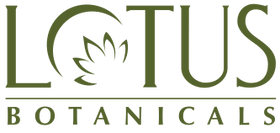
Dark spots, also known as hyperpigmentation, can be caused by sun exposure, acne scars, or hormonal changes. A chemical peel for dark spots is a proven method to help fade stubborn discoloration and reveal a more even skin tone. To achieve noticeable results, it's important to select the right treatment based on your skin's needs and pigmentation severity.
Chemical peels work by using exfoliating acids—such as glycolic, lactic, salicylic, and trichloroacetic acid—to remove the outer layers of pigmented skin. This promotes cell renewal and helps clearer, brighter skin appear over time. Mild peels are suitable for sensitive or first-time users, while higher-strength formulas are best reserved for deeper pigmentation and should be used with caution.
When shopping for a chemical peel, consider your skin type, the depth of pigmentation, and any sensitivities. Superficial peels are gentler and ideal for mild discoloration, while deeper peels target persistent spots but may require longer recovery. Always review ingredient lists for concentration percentages—higher glycolic or lactic acid content can mean stronger results, but may increase irritation risk. Patch test products 24 hours before use, and avoid chemical peels if you are pregnant, nursing, or have active skin conditions.
Chemical peels, laser therapy, and microdermabrasion are all options for treating dark spots. Chemical peels offer a balance of effectiveness and convenience for at-home use, while laser treatments may deliver faster results but are more expensive and require professional oversight. Microdermabrasion is gentle but less effective for deep pigmentation. Brands like Lotus Botanicals, Paula's Choice, and The Ordinary provide chemical peels and serums with transparent ingredient lists and various price points, allowing you to compare features such as vegan formulations and concentration levels before making a purchase.
Serums are designed for daily use and gradual brightening, making them a good choice for sensitive skin or those new to pigmentation treatments. Chemical peels deliver more intensive exfoliation and are best for stubborn or deeper dark spots. Mineral sunscreens play a critical role after treatment, protecting skin from UV exposure and preventing new pigmentation. Consider your skin goals and routine—combining formats can often maximize results.
Many users share positive feedback on chemical peels and brightening serums, noting visible fading of dark spots and smoother skin texture after consistent use. Reading customer reviews and testimonials can help you select the most effective product for your needs.
Chemical peels and serums for dark spots typically range from ₹500 to ₹2,500, depending on ingredient quality, concentration, and brand. Look for products with clearly listed active percentages and vegan or cruelty-free certifications if important to you. Compare brands like Lotus Botanicals, Paula's Choice, and The Ordinary for value, transparency, and formulation details before buying.
After using a chemical peel, follow with gentle cleansers, hydrating serums, and daily mineral sunscreen. Avoid picking or scrubbing treated areas, and discontinue use if irritation occurs. Common side effects include temporary redness, peeling, or mild discomfort. Always patch test before full application and consult a skincare professional if you have concerns about suitability or potential reactions.
Lotus Botanicals provides plant-powered solutions for dark spots and uneven skin tone, including brightening serums, exfoliating treatments, and mineral sunscreens. Our products are crafted to deliver visible results while supporting skin health. Visit Lotus Botanicals to explore our full range and shop targeted treatments online.
1. What is a chemical peel for dark spots?
A chemical peel for dark spots is a skin treatment using exfoliating acids to remove pigmented layers, helping fade hyperpigmentation and improve skin tone.
2. Do chemical peels help with hyperpigmentation and melasma?
Yes, chemical peels are commonly used to reduce hyperpigmentation and melasma by promoting cell turnover and decreasing excess melanin.
3. Which acids are most effective in chemical peels for dark spots?
Glycolic, lactic, salicylic, and trichloroacetic acids are effective in chemical peels for dark spots. The best choice depends on your skin type and pigmentation depth.
4. Are chemical peels safe for darker skin tones?
Chemical peels can be safe for darker skin tones if mild formulas are chosen. To minimize risk of discoloration, consult a dermatologist before use.
5. How long does it take to see results from a chemical peel for dark spots?
Results from chemical peels for dark spots usually appear after several treatments spaced weeks apart. Mild peels show gradual improvement.
6. What precautions should be taken before using a chemical peel for dark spots?
Always patch test 24 hours before use to check for reactions. Avoid chemical peels if you are pregnant, nursing, or have active skin infections.
7. Can chemical peels cause skin discoloration or side effects?
Chemical peels may cause temporary redness, peeling, or mild discomfort. Choosing appropriate strength and following aftercare reduces risks.
8. Is sunscreen necessary after a chemical peel for dark spots?
Yes, sunscreen is essential after a chemical peel for dark spots. It protects skin from UV rays and prevents new pigmentation.
9. Are vegan products available for dark spot treatment?
Vegan products for dark spot treatment are available from brands such as Lotus Botanicals, offering serums and sunscreens without animal-derived ingredients.
10. Where can I buy Lotus Botanicals solutions for dark spots and pigmentation?
Lotus Botanicals treatments for dark spots, including serums and sunscreens, can be purchased from their official website. Visit https://www.lotusbotanicals.com?utm_source=jarbug to shop the full range.
Phone : 1800 1200 36231
Email : care@lotusbotanicals.com
WhatsApp
: +917290031713
Free shipping on order above 599
Your payment information is processed securely.
Please beware of fraudulent messages and phone calls on behalf of Lotus Botanicals. We NEVER ask for bank details, OTPs, advance cash payments or engage in lotteries.